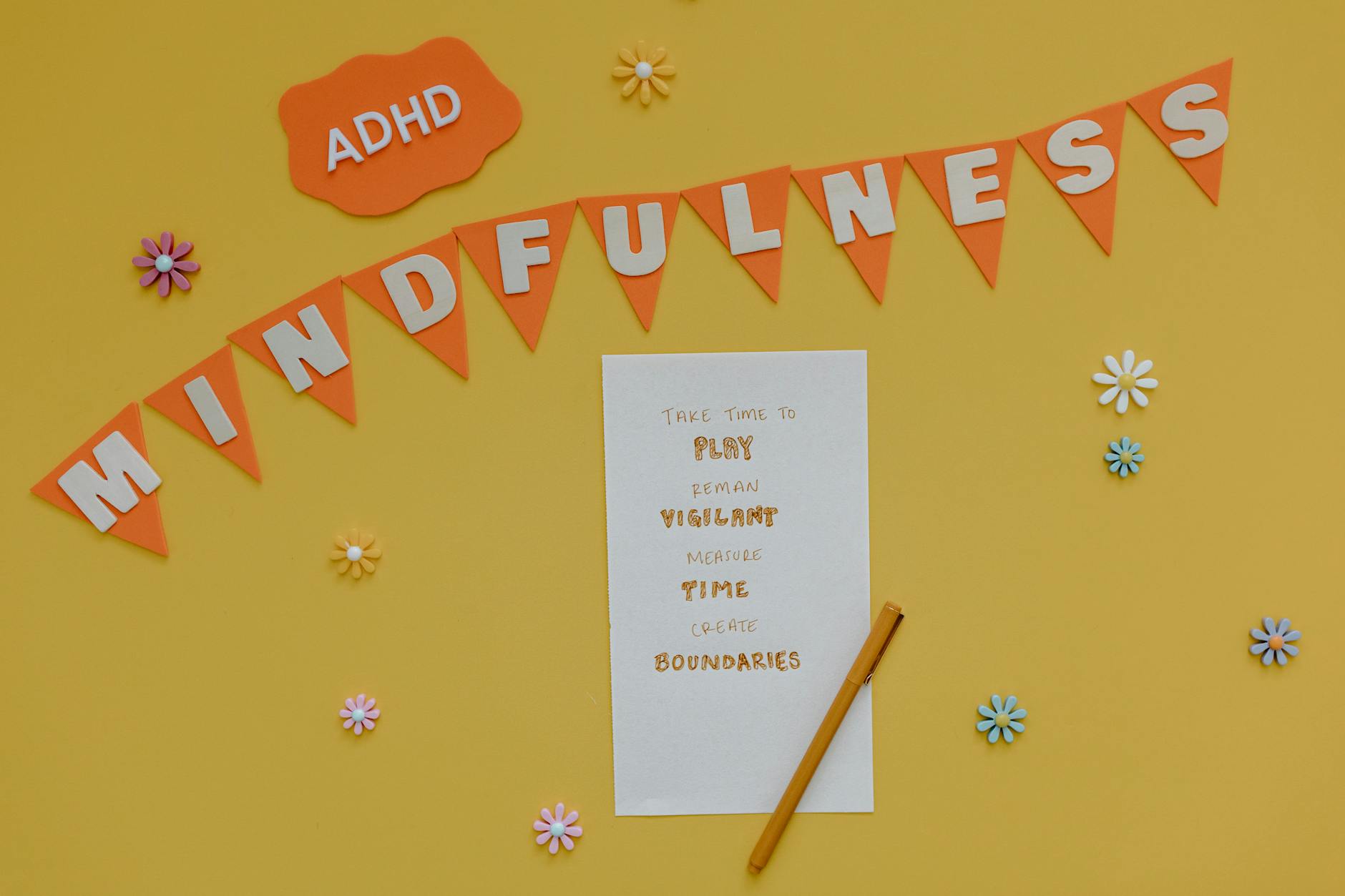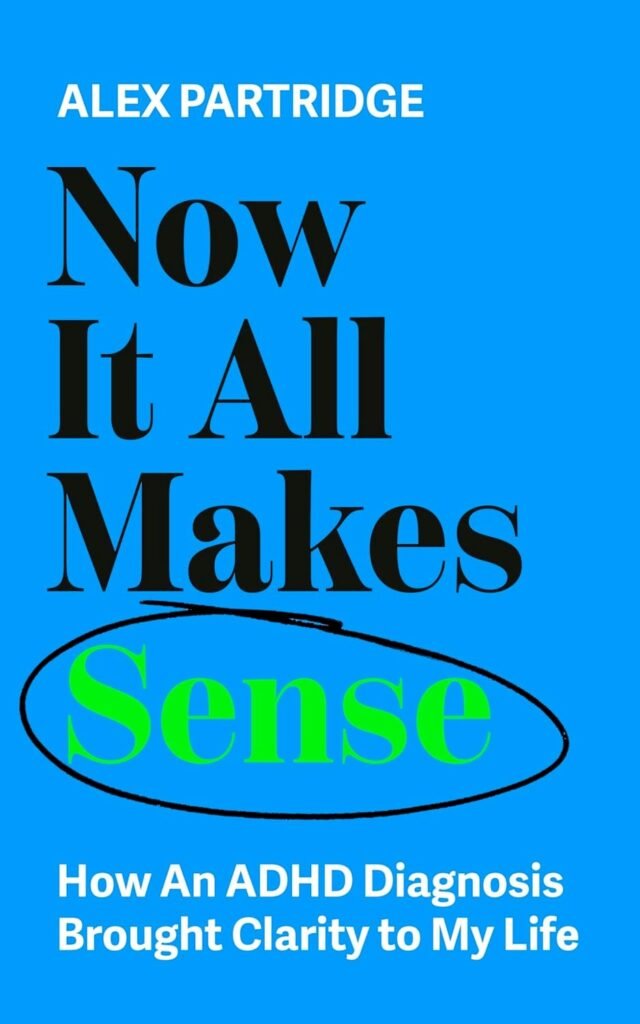Imagine discovering that the quirks and challenges you’ve wrestled with your whole life actually have a name and an explanation. This is the transformative thread running through Alex Partridge’s Now It All Makes Sense, a book that masterfully blends memoir with practical advice. Diagnosed with ADHD as an adult, Partridge peels back the layers of his journey with startling honesty, inviting readers into a world both uniquely his and universally relatable. It’s not merely a recounting—it’s a guide, a hand extended to those who are navigating new diagnoses or starting to connect the dots in their own lives. With humor, raw vulnerability, and actionable insights, Partridge reshapes the narrative around ADHD, offering not just understanding but a sense of empowerment. In his words, you may just find your own story—or the clarity you’ve been seeking.
About the Author: Alex Partridge
Alex Partridge’s Now It All Makes Sense emerges from a well of personal and universal experiences, shedding light on the intricacies of living as an adult with ADHD. Partridge’s narrative isn’t just a tale of individual struggle; it’s a resonant anthem for a community often overlooked or misunderstood. His ability to marry personal insights with actionable advice stems from a life steeped in advocacy and self-reflection. Below, we explore the key facets of his journey.
A Life Rooted in Advocacy
 Photo by Tara Winstead
Photo by Tara Winstead
Alex Partridge’s advocacy for ADHD awareness didn’t begin with a polished platform or rehearsed public speeches. Instead, it blossomed from the raw realization of his own diagnosis at the age of 34. Imagine reaching adulthood only to discover that the internal battles you’ve fought for decades—missed deadlines, forgotten appointments, and relentless distractions—had a name. This epiphany became his catalyst, fueling a crusade to demystify and humanize ADHD.
Through platforms like his podcast, ADHD Chatter, Partridge connects with listeners by sharing candid anecdotes and lessons drawn from his life. It’s not just about being a voice in the crowd; it’s about amplifying the stories of others like him. His work prioritizes breaking the stigma surrounding neurodiversity in a world quick to misunderstand. Learn more about his journey on ADHD Chatter.
Tying Personal Challenges to Broader Narratives
In Now It All Makes Sense, Partridge accomplishes a rare feat: he seamlessly connects his individual experiences with ADHD to struggles faced by a larger neurodivergent audience. This isn’t just his autobiography; it’s a guidepost for others navigating similar challenges.
He masterfully illustrates this through tales that are intimate yet strikingly relatable. For example, Partridge speaks of the constant mental juggling act required to thrive in a fast-paced society—one that feels almost like dancing to a rhythm nobody else can hear. These moments resonate deeply for readers whose internal struggles often mirror his, fostering solidarity and understanding.
More importantly, Partridge ties these personal accounts to collective advocacy. His writing urges readers to consider broader implications, such as workplace inclusivity and educational reform. His work is as much about personal healing as it is about societal change. Discover more about how advocacy shapes his work.
In Alex Partridge’s world, the line between the personal and the communal blurs. His book serves as a rallying cry for those with ADHD to step into the spotlight, not to apologize, but to illuminate a world that hasn’t always understood their challenges.
Key Themes Explored in the Book
Alex Partridge’s Now It All Makes Sense doesn’t merely recount his experience of living with ADHD; it serves as an intricate tapestry, weaving personal anecdotes with broader narratives. Each section of the book sheds light on core themes that resonate deeply with readers, offering validation, dismantling stereotypes, and imparting a sense of empowerment. Below, we breakdown the book’s key themes.
Finding Validation Through Diagnosis
Imagine living years, maybe decades, feeling like you’re swimming upstream in a river of expectations you never seemed to meet. The moment of receiving an ADHD diagnosis as an adult is not just a revelation—it’s a recalibration of identity itself. Partridge paints this emotional journey vividly, describing the catharsis that many experience after finally understanding the struggles that have shadowed their lives.
The book explores this process as a deeply personal one: relief at having a name for your challenges, mixed with regret for lost time. It’s not just about labeling an experience but reframing how you perceive yourself entirely. For many adults, finally pinning down the cause of their difficulties is akin to finding a roadmap after being lost in the woods.
For a deeper dive into the emotional complexities of an ADHD diagnosis, learn more here.
Breaking Down Stereotypes About ADHD
 Photo by Tara Winstead
Photo by Tara Winstead
Partridge doesn’t hold back when it comes to challenging the pervasive myths surrounding ADHD. He takes particular aim at the notion that ADHD is purely a childhood condition, offering insight into the growing number of adults, and especially women, who are diagnosed later in life. By sharing stories of misdiagnosis and invisibility, the book shines a harsh light on the biases that make it harder for women to be accurately diagnosed.
Through a mix of research and storytelling, Partridge reveals how societal expectations of gender play a role in masking ADHD symptoms in women. This section of the book feels like a sharp and necessary primer for dismantling outdated narratives about who ADHD affects and how it manifests. Want to dig into these misconceptions further? Explore the untold stories of women with ADHD.
Practical Strategies for Managing ADHD
While much of the book is reflective, it doesn’t shy away from the practicalities of living with ADHD. Partridge generously shares strategies that have helped him, offering readers tools that are both actionable and forgiving. From the importance of routines to breaking down overwhelming tasks into manageable chunks, these suggestions are rooted in real life, not theoretical guesswork.
One standout section discusses how adopting tiny habits can lead to meaningful change. Think of it like assembling a puzzle: instead of being intimidated by the whole picture, you start with one corner piece. Partridge simplifies strategies without simplifying the struggles, acknowledging that even small victories are worth celebrating. For more real-world tips you can implement, check out these ADHD-friendly strategies.
Balancing Vulnerability with Empowerment
Partridge’s writing is a delicate dance between exposing vulnerabilities and rallying for personal empowerment. He doesn’t sugarcoat the challenges—far from it—but neither does he portray those with ADHD as victims of their neurological wiring. Instead, he invites readers to view ADHD as a lens rather than a limitation, providing a narrative steeped in resilience and self-acceptance.
His humor and candid storytelling transform moments of perceived weakness into rallying cries. It feels less like reading a memoir and more like having an honest conversation with a confidant—one whose revelations leave you standing a little taller. Through this balance, Partridge fosters a form of empowerment that feels earned, not handed out. For a more expansive view on how empowerment can shift ADHD narratives, learn from this perspective.
In exploring these themes, Partridge’s book offers much more than one man’s perspective—it becomes a mirror in which readers may see their own struggles, triumphs, and possibilities reflected.
Strengths of Now It All Makes Sense
Alex Partridge’s Now It All Makes Sense stands out as an illuminating and invaluable resource for readers navigating ADHD. Its strengths lie in its ability to balance relatability, accessibility, and practicality, making it a standout addition to both the ADHD literature and the broader self-help genre. Below, we unravel some of the key strengths that make this book indispensable.
Relatable Personal Stories
 Photo by Tara Winstead
Photo by Tara Winstead
At the heart of Partridge’s work is its collection of deeply human anecdotes, which serve as both a mirror and a guide for readers. By drawing on personal experiences, Partridge breaks down the intricate maze of life with ADHD into relatable moments. These stories are not just emotional touchstones; they are entry points into understanding the ADHD experience.
Imagine reading about a chaotic morning that culminates in forgotten car keys and missed deadlines. It’s a story you might have lived yourself—or seen in someone close to you. Partridge taps into these universal moments with such earnest detail that readers feel seen, often finding moments of solidarity and validation through his words. His humor and candor make even the heavier moments land with empathy.
For readers craving more firsthand ADHD stories, this collection of personal ADHD experiences provides additional insight and connection.
Accessibility for Neurodivergent Readers
The structure of Now It All Makes Sense is itself a nod to neurodivergent readers, especially those with ADHD. Partridge has created a format that recognizes and accommodates the unique reading challenges faced by this audience. Instead of dense, intimidating blocks of text, the book is divided into manageable sections, each brimming with concise insights. It’s like reading with a built-in roadmap rather than navigating an overwhelming labyrinth.
Consider the achievements here akin to designing a room for warmth and functionality—Partridge has assembled the pieces thoughtfully, ensuring no one feels lost. Key points are highlighted, and transitions are smooth yet intentional, so readers can pick up the book at any time and still walk away feeling they’ve gained something valuable. Such intentional organization ensures that learning doesn’t feel like an uphill battle.
For more accessible content designed for neurodivergent readers, you can explore this guide on how ADHD-friendly formats foster understanding and engagement.
Practical and Actionable Advice
Perhaps the book’s most universally praised feature is its ability to transform abstract ADHD struggles into tangible solutions. Far from being a theoretical guide, Now It All Makes Sense provides hands-on advice for navigating everyday complexities, from managing work to building financial habits that stick. Partridge’s tips are a toolkit rather than a sermon, grounded in real-life experience rather than lofty ideals.
For example, readers learn about techniques as intuitive as the “two-minute rule”—a method for tackling procrastination by addressing tasks that take less than two minutes—an especially useful strategy for ADHD minds prone to distraction. He also unleashes helpful frameworks for parenting challenges, offering bite-sized reminders for fostering patience and structure. Readers never feel lectured; instead, they’re handed tools and encouraged to build in their own way.
For readers eager to sharpen their ADHD-management strategies, this practical resource is another excellent companion to Partridge’s guidance.
In these sections, Partridge’s writing offers something extraordinary: hope wrapped in practicality, empathy delivered with precision. It’s this balance that turns Now It All Makes Sense from just another book on ADHD to an essential guide for anyone seeking clarity and empowerment amidst the challenges of neurodivergence.
Critiques and Limitations
While Alex Partridge’s Now It All Makes Sense offers a compelling mix of memoir and practical advice, it’s not without its critiques. Like any work that bridges personal narrative with broader concerns, it faces questions about its depth, representation, and practical application. Below we examine some of the noted limitations of the book.
Limited Research Basis
One of the recurring critiques of Now It All Makes Sense is its heavy reliance on personal experience as the foundation for its insights. While this lends a certain authenticity and relatability, it may leave readers seeking a more rigorous academic perspective feeling unsatisfied. The book shares vivid anecdotes and real-life challenges, but it doesn’t delve deeply into the science of ADHD or offer a systematic explanation backed by studies.
This approach, while intentional, might pose a limitation for those looking to root their understanding in established research or to apply the text in professional or educational settings. Partridge focuses more on lived experience than scholarly discourse, aligning the narrative closely with his journey rather than universal principles. If you’re someone who craves an analytically-driven portrayal of ADHD, this may not fully align with your expectations.
For a deeper exploration of academic perspectives on ADHD, check out this resource.
Overgeneralization of ADHD Experiences
ADHD is not monolithic—it is a sprawling spectrum of behaviors, challenges, and coping mechanisms. Critics argue that Partridge’s portrayal, while deeply personal, sometimes risks oversimplifying the diversity of ADHD experiences. This is particularly significant when discussing adult ADHD, as the condition manifests differently across gender, age, and cultural lines.
Though the anecdotes are undoubtedly heartfelt, they might inadvertently exclude readers whose symptoms do not mirror Partridge’s own patterns. Think of it as walking into a room filled with mirrors reflecting only one angle—you admire the clarity of your own reflection, but you miss the complexity of the broader scene. By leaning heavily on his narrative, Partridge may give the impression that his experience represents the core of the condition, which, though relatable, is not entirely accurate.
If you’re curious about how ADHD varies across different populations, this article dives deeper into the spectrum of ADHD representation.
Parenting Sections Lacking Depth
 Photo by Mikhail Nilov
Photo by Mikhail Nilov
Partridge’s sections on parenting with ADHD, though well-meaning, have been flagged as less impactful by some readers. Critics note that his guidance in these parts feels thin compared to the otherwise robust narrative. Why? It’s likely rooted in Partridge’s personal experience. While he empathetically explores ADHD’s influence on parenting, his insights stem primarily from observation rather than lived involvement as a parent.
For parents navigating the nuanced challenges of raising children while managing ADHD, these parts may feel cursory. It’s a bit like trying to explain the intricacies of a dance you’ve only watched but never performed—a theoretical framework without the depth of emotional resonance or hands-on advice.
For more in-depth resources specifically addressing parenting with ADHD, consider exploring this guide.
Though Now It All Makes Sense is undeniably impactful in many regards, these limitations should be kept in mind. They remind us that no single account—regardless of how heartfelt it is—can ever fully encapsulate the complexity of ADHD.
Why ‘Now It All Makes Sense’ Stands Out
Alex Partridge’s Now It All Makes Sense is not merely another entry into the self-help genre—it’s an intricately woven narrative that transcends categories. By integrating memoir with guidance, the book builds a bridge between personal revelation and communal insight, creating a unique and compelling reading experience. Below, we explore the facets that make this book uniquely impactful.
A Blended Memoir and Guide
 Photo by ready made
Photo by ready made
What sets Now It All Makes Sense apart is its dual nature as both a deeply personal memoir and a practical guide. Partridge crafts an intricate narrative that feels as immediate as a friend’s heartfelt confession while also offering structured insights akin to an accessible self-help manual. The book takes readers on a journey through his experience of discovering ADHD in adulthood, punctuating emotional highs and lows with pragmatic takeaways.
Imagine taking a scenic train ride where every emotional stop is paired with actionable advice, whether it’s redefining productivity or crafting kinder self-expectations. This unique structure ensures the book isn’t limited to introspection but offers real-world utility. It’s not just a story—it’s a roadmap for anyone seeking to transform self-discovery into meaningful change. To explore more, take a look at what readers are saying about the book.

